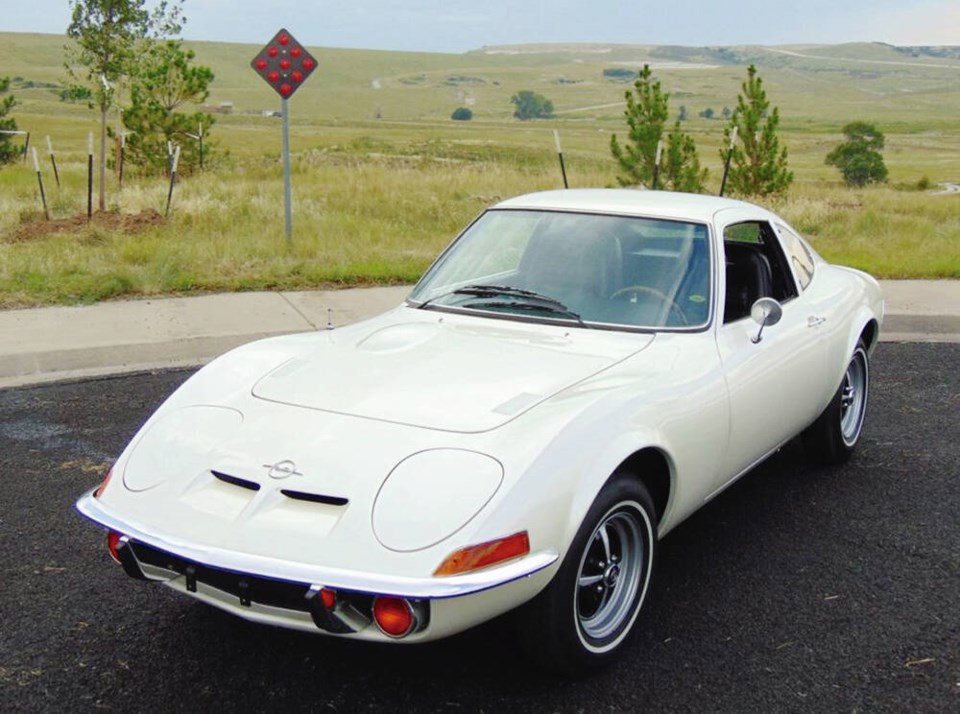The Opel GT was one of the handsomest little sports coupes of the 1960s, a product of General Motors subsidiary Adam Opel AG, of Russelscheim, West Germany.
Opel had a long history. The five Opel brothers began making bicycles and sewing machines in the 19th century. They started manufacturing automobiles in 1898 with a single cylinder, rear-engine model based on the Benz-influenced German Lutzmann.
This wasn’t very successful so they moved to a two-cylinder model, which also failed to impress them. In 1902, a deal was struck with the French Darracq company in which Opel would produce Opel-Darracqs under licence until 1906 while developing its own models.
The Opel company gradually expanded to a wide range of cars, and like many other early manufacturers, competed actively in motorsports to gain publicity by proving their durability and performance.
Opel was progressive and in 1924 became the first German auto manufacturer to adopt the moving assembly line pioneered by Ford Motor Co. in Highland Park, Michigan in 1913.
By 1928 Opel was Germany’s largest automobile maker, and coincidentally, the world’s largest bicycle builder.
But an economic downturn in the 1920s forced the Opel family to become a publicly held company, allowing General Motors to acquire controlling interest in 1929.
In spite of its early sporting activities, Opel had become a builder of fairly conservative, reliable sedans. It was therefore a bit surprising when a concept Opel sports car appeared at the Frankfurt Auto Show in 1965.
The Opel GT was a low, fashionable fastback two-seater that somewhat predicted the styling of the 1968 Chevrolet Corvette. This was not surprising as it was the work of GM stylist Clare MacKichan, now in Russelscheim, who played a major role in the design of the very successful 1955 Chevrolet and other GM models.
Opel claimed it had no plans to put the GT into production, but response was so positive they changed their minds and the production Opel GT appeared in 1968. Although attractive in a bobtailed kind of way, the production version had lost some of the sleekness of the concept. The Corvette influence was unmistakable in the swoopy lines and lack of a trunk lid.
The trim GT had a 2,431 mm (95.7 in.) wheelbase, was 4,112 mm (161.9 in.) long and 1,580 mm (62.2 in.) wide. It was only 1,224 mm (48.2 in.) high so entry and exit were aided by extending the doors into the low roof. It weighed 955 kg (2,105 lb).
The GT was based on Opel Kadett sedan mechanicals, adequate but not outstanding for a sports car. The engine was moved back 406 mm (16 in.) for better balance and handling. Unlike the fibreglass-bodied Corvette, the GT had a steel body with the body/chassis unit built by French coachbuilder Brissonneau and Lotz.
Front suspension was A-arms with a transverse multi-leaf spring while the rear was a beam axle with trailing arms and coil springs. Brakes were discs front and drums rear.
A lever on the centre console made the headlamps disappear by rolling 180 degrees on a longitudinal axis.
The GT was to have either a 1.1 litre (65.8 cu in.) overhead valve four-cylinder engine or a 102 horsepower 1.9 litre (115.8 cubic in.) single overhead cam four. With only 67 horsepower, the smaller version would have been somewhat weak and it’s doubtful any reached North America where Opels were sold through Buick dealers.
Power went to the rear wheels through a four-speed, fully synchronized, manual transmission with three-speed automatic available.
The GT’s performance was respectable. Road & Track (6/69) recorded zero to 97 km/h (60 mph) in 10.8 seconds and top speed of 182 km/h (113 mph). It was a little faster than the MGB roadster which took 12.1 seconds to reach 97 (60) and had a top speed of 167 km/h (104 mph); the closed MGB GT was slightly faster.
R&T found the Opel’s handling only mediocre with strong understeering tendencies. They considered the 165x13 tires too small for the job, although they did praise the comfortable ride.
In spite of being a pleasant, stylish little sports coupe with adequate performance, the GT lasted only six years. It remained basically the same for its entire life, the main styling change being the fitting of four-spoke steel wheels in 1973, the year its demise was announced.
Among the reasons for ending production was formidable new competition from such cars as the Datsun 240Z; to remain competitive the GT would have required a redesign. Also, Brissonneau and Lotz were terminating their body building contract.
The Opel GT “mini-Corvette” was popular enough that more than 100,000 were built from 1968 to 1973. It combined attractive styling with reasonable comfort and excellent performance. Some who offered less soldiered on much longer.



